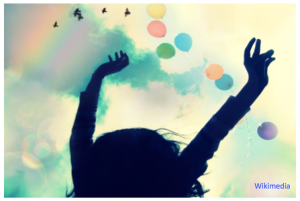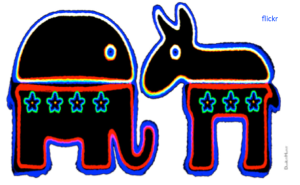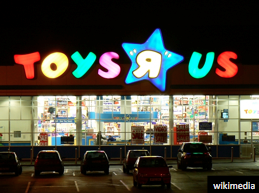New World Bank Initiative to Tackle Human Relationships
WASHINGTON, DC, USA, March 30, 2016
After decades of attempting to tackle some of the world’s most challenging problems, such as poverty, conflict, and economic mismanagement, the World Bank announced today that it will now tackle the principal cause of human misery.
Under the leadership of the Bank’s president Jim Yong Kim and the Bank’s new Global INsights Initiative (GINI), the World Bank’s analytics have become more penetrating and its operational agenda far more daring.
“We are excited by the opportunity to address the root cause of the world’s greatest conflicts,” said Kim, the bank’s president. “People, and how they just can’t get along.”
Fractured relationships have been increasing monotonically for several decades. The frequency of marital fights, rising divorce rates, and the substantial increase in short term relationships – facilitated by apps such as Tinder – make this initiative a necessary next step for the Bank and the world, claims Varun Gauri, who is the lead for the new task force.
“Within five years,” said Gauri, “The team will provide a definitive answer to why couples fight so much.”
This five-year initiative will include educating the public in various topics pertaining to effective relationships, piloting different family structure arrangements, and conducting randomized controlled trials (RCTs) of new marriage contracts. Among the many topics that the task force is expected to study are: Teen dating decisions (i.e. who to date, who not to date, how to roll your eyes at your parents advice), timing marriages, correct strategies for marital fights (i.e. how to argue effectively, things to fight about, how to make sure the couch is comfortable after those fights), money management in the home, techniques for effective and productive makeup sex, and how to properly raise children.
There will be a social accountability component in which individuals dissatisfied with their marriages will be able to call the World Bank. There will also be a worldwide dating app on the World Bank website.
“It is not as if men are really from Mars and women from Venus,” said Kim. “But let’s just say that when men try to meet women halfway, on Earth, they usually get lost and don’t stop to ask for directions.”
The initiative is being supported by a $38.2 million grant from the Hallmark Corporation a $7 million grant from the Gates foundation, and a $20.7 million grant from the Swedish government.
“Everyone who’s ever been in a relationship agrees that this is a very good use of resources,” added Gauri. “They say money can’t buy you love, but it can help us figure out why it’s so hard to make relationship work.”
The World Bank plans to complete this initiative by the year 2021.
The Oscars' "Meta-Film" Bias
 For the third time in four years, the Oscar for Best Picture has gone to a film about film – a “meta-film” if you will. In 2011, The Artist examined film and art from behind the scenes and last year, Birdman did the same with a darker edge.
For the third time in four years, the Oscar for Best Picture has gone to a film about film – a “meta-film” if you will. In 2011, The Artist examined film and art from behind the scenes and last year, Birdman did the same with a darker edge.
The 2012 best picture went to Argo prompting Stephen Colbert to incisively comment, “Big surprise, Hollywood honors the film where Hollywood is the hero.” Notably, the only recent year without a meta-film winner, 2013, was also the only year without a meta-film in the Best Picture category.
If we wanted to, we could take this observation and ask the question: What does this say about the Academy? Then we could use this question as an excuse to gleefully criticize the Oscars for the duration of a news cycle.
But instead, why don’t we take this Academy bias and ask a harder question: Are we not all as biased as the Oscars?
The Oscars have always been a huge self-congratulating event. The event allows artistic elites to indirectly praise themselves by praising others and the magic of art. What’s important to remember, however, is that this self-congratulatory behavior is not confined to the Oscars; it is a fundamental human tendency.
Hollywood’s bias to praise films that embody Hollywood values and issues is just another example of how people in general excessively praise politicians, professionals, and pastors who uphold their own personal values.
The Oscars, punk rock concerts, and Sunday-morning church services all often reiterate this wonderful self-congratulation. “Movies are magic.” “Punks are awesome and the Man is terrible.” “We are the people of God and we alone follow the truth.” These experiences make us feel good because they affirm the core of our identity and the rightness of our groups, in a socially acceptable way.
Psychological research shows that people derive their self-worth from their groups and beliefs. Accordingly, people are motivated to uplift their own groups and beliefs while derogating outsiders and rival beliefs. This can provide immediate joy, but here’s where the warning comes in.
The desire to see our own beliefs and groups as wonderful may weaken our ability to perceive the actual truth. Furthermore, it may weaken our ability to understand how others who do not hold our biases will perceive the world.
The Oscars picking The Artist (in my opinion a delightful film), Argo (in my opinion a great film), and Birdman (in my opinion a stylish thoughtful film) is no immediate cause for alarm. However, these Oscar selections offer insight into a fundamental tendency of human nature, and that tendency is causes for constant alarm. It is the tendency that leads to social bias and societal problems.
In a culture where winners are often selected by like-minded individuals, we must watch out for this tendency in ourselves, others, and society at large. We all, the Academy very much included, should try and genuinely celebrate people other than themselves.
By Troy Campbell
 @TroyHCampbell studies marketing as it relates to identity, beliefs, and enjoyment here at the Center for Advanced Hindsight and the Duke University Fuqua School of Business. In Fall 2015 he will begin as an assistant professor at the University of Oregon Lundquist College of Business.
@TroyHCampbell studies marketing as it relates to identity, beliefs, and enjoyment here at the Center for Advanced Hindsight and the Duke University Fuqua School of Business. In Fall 2015 he will begin as an assistant professor at the University of Oregon Lundquist College of Business.
You may also enjoy his other posts mixing psychology and movies:
Why Super Bowl Commercials Are So Much Better
 On Sunday, the Super Bowl once again served up a batch of funny, cool, and even moving commercials. For decades now, Super Bowl commercials have continued to impress and touch us with a car starting Darth Vader kid, a horse-befriending dog, a 1984 rule breaking Apple user, a Pepsi drinking Cindy Crawford, and on and on.
On Sunday, the Super Bowl once again served up a batch of funny, cool, and even moving commercials. For decades now, Super Bowl commercials have continued to impress and touch us with a car starting Darth Vader kid, a horse-befriending dog, a 1984 rule breaking Apple user, a Pepsi drinking Cindy Crawford, and on and on.
This has left many wondering: why aren’t all commercials as good as the Super Bowl commercials? If business can make such great ads, why don’t they always do so?
To answer these questions, we need to remember the real purpose of any advertisement is: to be effective. Unfortunately for viewers, ads don’t need to be good to to be effective.
The Super Bowl is a rare case where the audience is paying full attention expecting greatness. This environment allows the ads to be complex, nuanced, and entertaining.
However, outside the Super Bowl, ads have to play an entirely different game. Many everyday-ads have to fight to win the attention of highly distracted TV viewers, who are often channel surfing or multitasking. Many viewers don’t even look at the screen as they play on their computers, clean, or get ready for work.
This means the ads cannot tell an extended story about a puppy returning home like the #BestBuds Budweiser ad from this year. These ads only work during times like the Super Bowl when people say, “Be quiet the commercials are on!”
http://www.youtube.com/watch?v=xAsjRRMMg_Q
Instead, everyday ads must be loud, aggressive, and full of brand references. They must grab viewers’ attention and increase awareness.
Businesses want their products to enter into what market researchers call consumers’ “consideration set,” – the few products that come to mind when consumers thinks about a product category. This is often accomplished through annoying ads or unconscious mental processes, and can come at the expense of quality.
This means ads like Coke’s 2015 Super Bowl spot #MakeItHappy, though cool or even inspiring, do not work well during the average commercial break. For instance this 2015 Coke ad features a somewhat complex premise with multiple lines of evolving text that require reading. And there’s no helpful guiding narration. The result: it is a super engaging ad, but only for viewers who are already engaged. This advertisement would not stand a chance during a Good Morning America commercial break, while a parent focuses primarily on prepping a child’s lunch.
http://www.youtube.com/watch?v=ibgvkXm9Qkc
Finally, most normal ads get heavy rotation. This means the ads need to be effective over relentless viewings. Many Super Bowl ads rely on a twist, shock factor, or a heartfelt narrative. Excessive viewings of these types of ads can lead to a loss of value and could even cause backfire effects.
For instance, the “edgy” 1984 Apple ad could lose its edge with each viewing. One can think of a Super Bowl ad like an amazing artsy song—great, but not for every moment—and everyday ads like the second radio single from any Maroon 5 album—mundane but infinitely digestible.
The Bigger Lesson
When we contrast Super Bowl ads with normal ads, we learn a powerful business lesson: being effective does not always mean being good. It’s a lesson many of us find hard to swallow, but it’s a bitter pill we all need to take.
Quality has its place in TV advertising and so too does effective mediocrity. Unfortunately, the latter is usually the norm. Yet, we can all be thankful that for one evening each winter, the stars align such that what makes an advertisement effective is also what makes it enjoyable.
By Troy Campbell
@TroyHCampbell studies marketing as it relates to identity, beliefs, and enjoyment here at the Center for Advanced Hindsight and the Duke University Fuqua School of Business. In Fall 2015 he will begin as an assistant professor at the University of Oregon Lundquist College of Business.
2014 In Review: The Psychology Behind Protests, Ice Buckets, Taylor Swift, and More
From the silly to the serious, Troy Campbell, a Ph.D candidate at the center, explains the psychology behind five highlights of 2014 in no particular order.
#1
The Birth of Modern Charity
It dominated Facebook feeds for weeks—everyone from your high school girlfriend to your college roommate to your extended family seemed to join in. The trend swept the nation, yet the question remains: why was the ALS Ice Bucket Challenge so successful?
The ALS Ice Bucket Challenge shows that with successful charity more than just altruism is involved. Social pressure to donate can be extremely motivating and so can self-serving desires to seem clever, cool, or in some cases even sexy on social media.
This viral phenomenon vividly demonstrated how most charities succeed: through a cocktail of altruism, social pressure, and selfishness. Anonymous donors, donors induced by guilt, and donors wooed by the promise of having their name prominently display on a wall have always existed. For the social media inclined, some donors may be tempted to donate or promote in order to have their face posted on Facebook.
So how should we react to the Ice Bucket Challenge’s success? With praise or backlash?
It’s definitely true that the ALS Ice Bucket Challenge was imperfect, as some people did the challenge for the “wrong reasons,” donated disproportionately to one charity, or simply could have given more. But far too often, we let perfect be the enemy of the good (especially when it comes to charity). Moreover, we often expect charity drives to be perfect when humans, as psychological research has consistently demonstrated, are so far from perfect.
As flawed as this phenomenon was, anyone interested in charity or human behavior would be remiss to ignore the lessons the Ice Bucket Challenge has taught us about how to create a viral and powerful, albeit imperfect, charity movement when donors will always be part altruistic givers, part herd-followers, and part narcissists.
#2
The Year of “Happy”
 Pharrell’s summer hit, “Happy,” was the number one song on Spotify this year, and it certainly seems that Americans have started to care more and more about becoming happier.
Pharrell’s summer hit, “Happy,” was the number one song on Spotify this year, and it certainly seems that Americans have started to care more and more about becoming happier.
There were three widely popularized and reported scientific findings this year that helped us understand how to be as happy as Pharrell’s song.
I – Experiences. The mantra of happiness research this year was: If you want to be happy, you shouldn’t spend money on material goods and yourself, but rather, you should spend money on experiences and on those around you. Amit Kumar and others have demonstrated that experiential purchases versus material purchases provide us with more anticipated happiness, higher long term happiness, and better social connections. My own lab mate Lalin Anik, has shown that giving to others not only improves happiness, but also boosts productivity. As recent research has demonstrated, it truly is better to give than to receive.
II – Meaning. Modern research has gone beyond feelings like pleasure or enjoyment to explore deeper issues like finding meaning in life, a sense of purpose, and the values we hold. For instance, having children can be a source of incredible stress, but it has also been shown to make adult life more meaningful. A number of scientific papers this year explored how obtaining happiness and obtaining meaning can sometimes require slightly different paths.
III – Differences. It’s important to remember that what makes you happy does not always make others happy too, something Ed O’Brien, myself, and our colleagues found this year that often people don’t realize. The science community this year poured out examples of how differences vary across people. One vivid example of this came from Amit Bhattacharjee and Cassie Mogilner, who found that younger and older adults crave different types of happiness. Younger adults crave spectacular moments of happiness (e.g. meeting a favorite celebrity) and older adults crave more mundane everyday happiness (e.g. relaxing with relatives). I recently wrote about how I learned this first hand, when my grandpa sweetly explained to me how just mudanely being with his wife made him happier than anything.
#3
The Desire For Authenticity
 Today, people want natural ingredients in all aspects of their lives. People want it in their foods, their local products, and even in their favorite televisions shows. Well-developed characters, flaws and all, are becoming a trademark of primetime cable television. We need look no further than the spectacular success of the drama Breaking Bad or new age sitcoms like Louis CK’s Louie and Lena Dunham’s Girls. These shows demonstrate that there is a new currency of authentic self-expression and honest presentations of one’s flaws. From food to entertainment to beauty there’s a real big push to “be real.”
Today, people want natural ingredients in all aspects of their lives. People want it in their foods, their local products, and even in their favorite televisions shows. Well-developed characters, flaws and all, are becoming a trademark of primetime cable television. We need look no further than the spectacular success of the drama Breaking Bad or new age sitcoms like Louis CK’s Louie and Lena Dunham’s Girls. These shows demonstrate that there is a new currency of authentic self-expression and honest presentations of one’s flaws. From food to entertainment to beauty there’s a real big push to “be real.”
At psychology conferences, you can already see authenticity is going to be one of the next big topics in consumer science and is going to prove to be a complicated one. For instance, new research looks at how the desire for “authenticity” can lead to some nasty results, like the exclusion of others. Today, many groups have become quite hostile to people who are not “authentic.” Some controversies like #GamerGate and handwringing about “fake gamer girls” shows one of the perils of the pursuit of authenticity when combined with ugly cultural prejudices.
#4
The Album You Had to Buy
 When Taylor Swift removed her music from Spotify, the world responded by purchasing her new album, 1989, en masse. It’s interesting to wonder, though, whether the people who actually bought her album ended up liking it more or less than if they had just streamed it? The answer according to psychological science is almost certainly “yes.”
When Taylor Swift removed her music from Spotify, the world responded by purchasing her new album, 1989, en masse. It’s interesting to wonder, though, whether the people who actually bought her album ended up liking it more or less than if they had just streamed it? The answer according to psychological science is almost certainly “yes.”
When people buy things, they experience those products differently due to a process called “effort justification.” People like products and care for them more when they put more effort or money into them.
Taylor Swift also made her album a quasi-symbol of social status, since it became more difficult to acquire. Owning and being able to talk about such a culturally relevant album required actually purchasing it. This way, owners of the album came to feel more like devoted fans or the culturally savvy, since the uninitiated can’t listen for free. As research from this center has previously shown, this feeling of exclusivity and mastery changes (and improves) one’s relationship with the product.
#5
The Role of Science and Protests
 For a long-time now, social scientists have shown there are still damaging systematic racial biases at work in America. The protests that marked the end of 2014 have shown the powers and limitations of social science’s ability to create positive social change.
For a long-time now, social scientists have shown there are still damaging systematic racial biases at work in America. The protests that marked the end of 2014 have shown the powers and limitations of social science’s ability to create positive social change.
Social science can be powerful. For instance with the existing social science data, we were able to answer questions like, “Are there racial biases in people’s minds that support the notion that people in power treat people of different races differently?” The unambiguous answer to this question is “yes.” So even if there was ambiguity about the role of race in some of the powder keg incidents behind the protests over the topic of race, the larger data does support the need for systematic changes that address race.
But the protests have also shown the limitations of social science. Science alone rarely leads us to social change. Good science must also be paired with promotion, education, and wide spread communication. Additionally, it depends on social action and the attitudes of the broader culture. It’s not always easy to get people to believe science when the results are inconvenient or cause “solutions aversion.”
#6 (Bonus)
The Problem of Solution Aversion
 This year was full of “solution aversion,” a term my colleague, Aaron Kay, and I coined to describe the act of denying a problem when one doesn’t like the solutions. This research received an abnormal level of media buzz, reaching the top of popular news aggregators like Reddit, we think because it neatly and clearly encapsulates the biases in politics that frustrate so many of us these days.
This year was full of “solution aversion,” a term my colleague, Aaron Kay, and I coined to describe the act of denying a problem when one doesn’t like the solutions. This research received an abnormal level of media buzz, reaching the top of popular news aggregators like Reddit, we think because it neatly and clearly encapsulates the biases in politics that frustrate so many of us these days.
Particularly, we find that when solutions to problems conflict with people’s political ideologies, people are more likely to deny the problems exist and the scientific evidence behind the problems. One example we used was the problem of climate change. We found experimentally that the more people dislike the proposed political solutions to climate problems, the more likely they were to deny the existence of the climate change problem.
These findings also received and gained a life of their own via blogger-commenters who used our political findings to highlight how solution aversion can also generally be problematic in today’s personal decisions. For marital, health, and career problems, many pointed out the aversive solutions like therapy and dieting can start to warp views about the actual existence of problems.
I now have pages and pages of potential processes of solution aversion to motivate future research. Medical doctors commented about their patients’ solution aversions, business professionals about their own and their employees’ solution aversions, and political persons about different groups’ solution aversions. The comments went on and on. It’s times like these you remember that certain pockets of the Internet can be truly awesome.
Looking Back and Looking Forward
If you have any thoughts on the psychology of 2014 or the future psychology of 2015, let us know. I believe in the promise of crowd sourcing the scientific enterprise and thought whenever possible.
Here’s to a happy, more rational, and more psychologically sound New Year.
The Psychology of a California Christmas
 Our local California native Troy Campbell discusses the reason, rational or not, Californians come to love their sunny type of holidays.
Our local California native Troy Campbell discusses the reason, rational or not, Californians come to love their sunny type of holidays.
As a Southern Californian native, nonnatives always assume I must be sad every time Christmas rolls around and it’s not white. They tell me that I must feel blue because something “essentially Christmas” or “properly winter” is missing.
Yet, nothing could be further from the truth. While the world assumes Californians are sad on Christmas day, many Californians are actually quite happy as we stroll along the beach and enjoy the unique concept of a Southern California Christmas.
As the Southern Californian band Jack’s Mannequin sings: “It’s Christmas in California and it’s hard to ignore that it feels like summer all the time, but I’ll take a West Coast Winter … It’s good to be alive.”
If you moved here you would probably hate this “always summer” vibe. You would probably miss the snow and the cold. But we don’t. We don’t dwell on how we are missing out on the typical winter traditions, because winter does not mean the same things to us that it does to you.
For us, winter means putting on a long-sleeve T-shirt and sharing a peppermint flavored frozen yogurt on a sunny patio; or taking a late-night walk on a decorated pier, possibly after a Christmas Eve service with the people we love; or strolling down Disneyland’s Main Street under the artificial (but quite awesome) snow. Experiences gain value through memories and localized meanings not just global meanings.
If Southern Californians wanted to, we could drive inland and be in the snow in a few hours or less and enjoy the global stereotypes of Christmas. But we don’t all migrate inland for the winter. Why? Because that’s not who we are and that’s not what winter or Christmas means to us.
In the winter season, many Californians often even develop what social scientists call an “oppositional identity.” We choose to swim or surf on Christmas Day and we proudly (and sometimes annoyingly) post photos of how beautiful and completely unmiserable it truly is here. In Southern California and the West Coast at large, we develop traditions in opposition to traditional winter norms.
In general, the world is often jealous of our generally perfect weather. So it is understandable that the world would like to think that for one season or just one Christmas Day, Southern Californians are jealous of others’ weather. But the truth is, were are not jealous. Maybe we’re missing something. Maybe we should be jealous of those enjoying a White Christmas. But because of who we are and the way we have grown up, we will never be convinced that anything is missing from our West Coast Winter.
When West Coasters are on the beach, with a new pair of Rainbow sandals fresh from the San Clemente outlet, a board in their hand, and In-N-Out Burger in their other hand, watching a pelican fly over the Christmas lights on the pier, it doesn’t feel like the moment is missing anything! In fact, for a Southern Californian native, a moment like this could not feel any more complete.
So let me wish everyone everywhere a happy holidays, whether you are somewhere as beautiful as California or as miserable as where you are. Sorry, couldn’t resist. But it is likely that wherever you are, you’ve come to love your type of Christmas or holidays. It’s just how the mind works, and whether that is irrational or not, it is in this case quite fantastic for us all.
By Troy Campbell
The 7 Irrational Behaviors of Black Friday
Every day of the year, American shoppers act irrationally. On Black Friday, however, shoppers’ irrationality and wildness climb to dangerously high levels. Why does Black Friday lead shoppers to grab and fight, especially when the stakes are often as low as fifty percent off toasters?
Over the last few decades, social scientists have cataloged the many different factors that lead to irrational consumer behavior, and Black Friday touches on nearly that entire list.
Luckily though, if shoppers stay aware of how Black Friday is designed to make them irrational—and if they take breaks, eat snacks, plan ahead, and keep a clear mind—then they can avoid falling victim to the “holiday.”
Here are seven reasons shoppers become so irrational and committed to deals on Black Friday, as well as a few ways you can protect yourself.
#1
Black Friday is like a hazing ritual
 Black Friday shoppers are dedicated—they sacrifice sleep, football games, and significant others’ approval to make the early bird sales.
Black Friday shoppers are dedicated—they sacrifice sleep, football games, and significant others’ approval to make the early bird sales.
When people go through pain and effort to reach a goal, then the goal actually looks more attractive in an attempt to justify the unpleasant struggle. Effects like this are common—think of brutal college hazing rituals, where new members commit more intensely to the group rather than turn away.
A shopper’s first sleepless Black Friday is like a hazing ritual that makes the deals seem that much more attractive—they must be worth it after all that effort.
#2
Shoppers are too “depleted” to be rational

People are vulnerable to irrational tendencies all the time, but they are at their most vulnerable when they’re tired and overwhelmed. Behavioral scientists call this state “depletion.”
In a state of depletion, people just don’t have enough willpower to resist temptation or the cognitive faculties to make complex decisions. Even math whizzes and businesses majors will falter when depleted.
Black Friday shoppers arrive sleep-deprived and stressed from the holidays. For companies, Black Friday can seem like taking candy from a baby. Only here the baby resists even less.
#3
What’s another $10 after the first $500?
 It hurts to spend money. There’s pain in parting with $10 for a flash stick. However, after spending $899 on a TV, the pain one feels parting with a Hamilton for a flash stick is practically gone.
It hurts to spend money. There’s pain in parting with $10 for a flash stick. However, after spending $899 on a TV, the pain one feels parting with a Hamilton for a flash stick is practically gone.
Restraint on Black Friday is even more unlikely because many shoppers tend to begin with the purchase of a large ticket item, like a TV or computer. After the big purchase, every $10 flash stick, $11 dollar t-shirt, or $13 kitchen knife, will not lead to the “pain of paying” that keeps people from buying every random thing on aisle during the other 364 days of the year.
Nobel Prize winners Daniel Kahneman and Amos Tversky explain that people are initially “loss averse”: initially people really do not like losing money. However, once people start losing money, their aversion to losing money starts to go away. Accordingly, cautious spenders can quickly become big spenders.
#4
The shopping momentum phenomenon
 Ever thought your friends turn into entirely different people when they go shopping? Well, scientific research suggests that indeed shopping does change people.
Ever thought your friends turn into entirely different people when they go shopping? Well, scientific research suggests that indeed shopping does change people.
Yale consumer researcher Ravi Dhar and colleagues find we are in a careful “deliberative” mind-set before purchasing an item—carefully weighing the pros and cons. Yet after the first purchase, a floodgate of “shopping momentum” opens up, and we make purchases more readily after.
Fortunately, the phenomenon of “shopping momentum” can be interrupted by a break in shopping. However, on frantic Black Friday breaks rarely occur, so shopping momentum is likely to persist for hours, if not the entire day.
#5
The Halo Effect — Amazing By Association
 One problem for shopper rationality is that the amazing door buster deals on Black Friday may create a “Halo Effect” such that even the bad deals seem amazing by association.
One problem for shopper rationality is that the amazing door buster deals on Black Friday may create a “Halo Effect” such that even the bad deals seem amazing by association.
Black Friday shoppers are better off thinking of Black Friday as a day that has both good and some bad deals. Not every sale is a bargain.
#6
Black Friday requires math skills many consumers don’t have
 To distinguish the good from the bad deals, it takes a little bit of math. But research shows many adult Americans lack the basic math skills necessary to evaluate the merits of a deal. For instance, many Americans don’t know that 10 percent of 1,000 is 100 or that 1/4 is larger than 3/20.
To distinguish the good from the bad deals, it takes a little bit of math. But research shows many adult Americans lack the basic math skills necessary to evaluate the merits of a deal. For instance, many Americans don’t know that 10 percent of 1,000 is 100 or that 1/4 is larger than 3/20.
Many Americans have what is known as “low numeracy” which means missing questions that national standards say elementary children should know. Are shoppers smarter than a 5th grader? Most often, the answer is no.
If shoppers don’t have the math skills, they are likely to get swept up in Black Friday. Shoppers without strong math skills should feel encouraged to bring along a friend who does, or even utilize smart phone applications that allow for better product evaluation.
#7
There’s no guilt when everybody’s doing it
 Businesses want Black Friday to be crowded. Not just because they want lots of wallets, but because crowds change people. In the case of Black Friday, crowds can remove all sense of guilt.
Businesses want Black Friday to be crowded. Not just because they want lots of wallets, but because crowds change people. In the case of Black Friday, crowds can remove all sense of guilt.
Few shoppers feel guilty buying another half-off toaster when the customers next to them have flat screens in their carts. When everybody’s peers are doing it and some peers are “doing it worse,” the painful experience of parting with money becomes a joyous spending spree.
Indeed, research on “social influence” finds that the examples of others can drive people to irrational and even unethical behavior.
Final Reminders
Don’t get too tired. Use a calculator. Decide what you want ahead of time. And don’t get brainwashed. Yes, Black Friday is fun. Yes, Black Friday is a day of great deals. But Black Friday is also a trap that’s very easy to fall into. Happy and responsible shopping everyone!
By Troy Campbell
Originally posted last Black Friday.
Why we love to hate Michael Bay
Transformers 4 grossed $1 billion dollars worldwide. Now, it’s out on Blu-Ray to add to that total. This has left many wondering what South Park creators Trey Parker and Matt Stone once famously pondered: “Why does Michael Bay get to keep on making movies” when his movies seem so terrible?
Well, modern consumer scientific research finally has an answer to this puzzle, and the answer isn’t just our poor taste in movies. We love seeing Michael Bay movies, because even if we don’t like the movies, we get to feel the “joy of judging.” This joy explains a lot of the modern entertainment economy, from watching reality TV to live tweeting the MTV Music Video Awards—two other examples where people tune into content they somewhat hate but love to somewhat hate.
With Bay’s movies, we enjoy the process of making snarky comments as we watch, searching for plot holes, and talking about how he is doing wrong by the source material. The movie could be bad, but the time we spend in the theater with the movie is fun.
From Hollywood movies to Harvard research, the idea that consumers crave engagement not just quality in their entertainment is becoming apparent.
The joy of judging and engagement gears into overdrive with Bay movies, as these pleasures are maximized when we feel some mastery and identity in the area. This is what makes Michael Bay’s movies so magnetic even if they also seem sort of repulsive; he consistently chooses topics that we have lots of knowledge of and that relate to our childhood identities (i.e., Transformers, Ninja Turtles).
We want to be a part of the community discussing these movies. So it does not matter whether Transformers 4 is good or not. We have to see it if we want to talk about the topic of Transformers.
Or consider The Amazing Spider-Man 2, a film that borrows heavily from the Michael Bay playbook of huge glossy visual imagery. That movie was not so good, was it? And comic fans knew that ahead of time. But did many of them still go? Absolutely. Why? Because the Spider-Man fans had to know whether the director got Spider-Man’s personality or the classic Gwen Stacy’s “arc” right.
Movies and television do not need to be good. The right type of movies and television are just a springboard for “second-level” enjoyment through Twitter, blogs and conversations.
So why does Michael Bay get to keep on making movies? Because bashing Bay is fun. While it might be tempting to feel bad for Bay, it’s worth remembering that all this Bay bashing means over $5 billion in box office total alone for the director. So good or bad, the movies are profitable and that’s what the movie business is all about.
Troy Campbell is an experimental researcher of consumer enjoyment and identity at Duke University and the Center for Advanced Hindsight.
You may also like “Why Who Plays Batman Matters” and “The Power of Modern Stand Up Comedy” by Troy Campbell.
The Meaning of Happiness Changes Over Your Lifetime
 The following is a scientific and personal article written by CAH member Troy Campbell about happiness.
The following is a scientific and personal article written by CAH member Troy Campbell about happiness.
One lovely afternoon, I began chatting to my grandpa. I was completely unaware he was about to say something that would change my view of happiness forever.
In the middle of our conversation, I felt a lull so I pulled out the classic question. “If you could have dinner with one person, living or dead, who would it be?” I couldn’t wait to talk about my long list of dead presidents, dead Beatles, dead scientists, and a really cute living movie star. But I was also really eager to hear what he’d say.
Then he simply answered, “My wife.”
I immediately assured him it’s not necessary for him to answer like that. We all knew he loves his wife, whom he eats dinner with every night and was currently over in the other room playing cards.
He still insisted, “My wife. I’d have a nice dinner with my wife.”
“Alright,” I said, maybe a little too snappy, “Someone other than your wife.”
“Well okay, it would be my good friend and neighbor, Bill,” He replied.
The I became a little angry and pleaded, “Come on, you wouldn’t pick like John Lennon or Abraham Lincoln or FDR? He was alive when you were, right?”
“No. I’d pick Bill.”
I was just about to explain the point of the game again when it hit me. He already understood the game, and he was not trying to mess with me. What would make him most happy would be to have the same meal he has everyday, with the woman he’s been married to for 50 years.
Happiness to him was ordinary.
***
Over the past years, the interest in happiness has exploded. Everyone seems to want to be happy, read about how to be happy, or listen to Pharrells’ hit song, “Happy.” In response, researchers and gurus have been trying to feed everyone’s interest in happiness by pumping out new studies and New York Times bestsellers.
However, there’s been one factor that’s been missing in all this happiness discussion and in retrospect, it seems ridiculously obvious. That factor is age. As the story of my grandfather vividly displays, at different ages, we are interested in very different kinds of happiness.
Two young psychologists have recently stepped onto the scene and started to explain how happiness varies over the lifetime. Amit Bhattacharjee of Dartmouth University and Cassie Mogilner of the University of Pennsylvania find that the young find happiness and self-definition through extraordinary experiences, like meeting a celebrity. In contrast, older adults find happiness and self-definition through everyday experiences, like dinner with a best friend or wife.
To fully illustrate this concept, consider any family vacation. Think about how difficult it always is to make both the children and parents happy. This is because happiness means something different to younger and older members of the family.
The young crave the extraordinary. They long to bungee jump off a cliff, find a celebrity, and post a stylized Instagram photo that exaggerates the extraordinariness of the moment. Youth culture embraces the concept the of Yolo — “You Only Live Once” — which is just a modern (and arguably more annoying) way to say “carpe diem,” which is just a Latin way to say “seize the day.” Yolo is not something new; it’s just a rebranding of the youth mindset that’s always been around.
In contrast, older people tend to find happiness and define themselves in the ordinary experiences that comprise daily life. So, on vacation, parents often just want to spend time as a family. They want to have a nice family dinner and play card games.
What’s important about Bhattacharjee and Mogilner’s happiness hypothesis is that it is a psychological hypothesis rather than a cultural hypothesis. The scientists argue that with fewer days left in their lives, people start to focus on daily experiences and close-knit friendships. And that’s exactly what the researchers find through a controlled experiment. When they took 20-somethings and made them feel as if their brains would stop optimally functioning at age 40 (as opposed to age 80), the 20-somethings felt like they had less time left and were more interested in everyday happiness activities. They end up acting more like older people.
It’s worth noting that these findings greatly contrast the “Bucket List” hypothesis, the idea that as people feel their days are running out, they are motivated to do the extraordinary. For instance, in the film The Bucket List, two aging men strive to have the most extraordinary experiences possible. Though these cases do exist in society, they may be the exception. In general the rule is that as people feel like they are aging, they turn away from the extraordinary and, like my grandfather, focus on the everyday.
***
So if happiness is as important a goal in life as American culture makes it seem, we need to understand how age affects it. Only then can we know how to better treat our families, communities, and citizens of all ages. Only then will we all be happy, even if happy will mean different things to different people at different stages of their lives.
Hindsights: Why Do Tourists Abroad Eat at Subway?
At the port in Cabo San Lucas, Mexico there are wonderful Mexican restaurants and authentic tasty taco trucks. But where might you find the Americans eating? Mostly at the Starbucks, the Subway, and the Johnny Rockets.
This seems puzzling: Why do Americans go abroad and eat at the most generic American restaurants?
One possibility is that these choices are convenient and safe: the American chains have good locations, are familiar, and have fast service. This may have something to do with it, but there’s another explanation to this puzzle—what’s known as the “American Abroad” syndrome. The crux of the syndrome is that Americans abroad end up feeling really American, so they act American.
Psychologists William McGuire and Rohit Despande find that when people are around a different race, group, or nationality, they think about those differences. Accordingly, how they think of themselves momentarily changes. For instance, many Americans may not constantly think of themselves as an American when living in the suburbs. However, when stepping off a cruise boat into a foreign land, their American identity may immediately become obvious.
Once people start thinking of themselves as American (or any group identity), they are more likely to act inline with that identity.
~Troy Campbell~
Enjoy Summer Movies with a Childlike Wonder Again
With the summer movie season officially starting with The Amazing Spiderman 2 (Though arguably it started this year early with Captain America), it’s time once again to enjoy big budget spectacle movies. But as adults sometimes it can be hard to feel the movie magic we felt as children. Don’t fret! Here are a few tips (inspired by research in consumer psychology) on how to enjoy movies with a childlike wonder.
#1 As a kid you had more time for movies. So as an adult, you need to make a little extra time.
When adults see movies, they might talk about the movie for a few minutes afterwards. If they are true nerds, maybe they read a blog or two. But that’s about it. The movie experience starts the night they see it and ends that very same night.
For a kid, the experience doesn’t end when the movie ends. Instead, the movie is an invitation into years of immersion into a fictional world. Kids talk nonstop about movies, force their parents to take them to Toys R Us to buy the action figures, and then expand on those stories through play, reading, fan websites, and video games.
The Fix:
You should make the time to get more involved with a movie world. How “good” you find a movie, can be affected by how much effort you put into it. This means reading blogs about movies and watching the behind the scenes features on the DVDs.
#2 Kids are encouraged to be excited about movies. So, as an adult you need to find friends that encourage that same excitement.
Not only do kids feel a sense of wonder with movies, but they are also encouraged to embrace that sense of wonder. Parents encourage their children to tell them about the things they love. No one encourages adults to talk about movies. The guy in the office next to me has explicitly made it clear that he doesn’t want to hear any more about the awesomeness of The Empire Strikes Back.
This is unfortunate, because the suppression of expression is terrible for enjoyment. Professor Sarah Moore of the Alberta School of Business finds when people explain exciting things in a boring way, they end up finding the content boring. But if they explain it in an exciting way, they magnify their enjoyment. The conclusion: if people do not express their passion with strong emotion, they may lose out on some of the passion.
The Fix:
If you want to enjoy movies more, put on a costume and attend a convention where nerd passion is socially encouraged. Or have a Katherine Heigl movie night if that’s more your thing. Or at the very least just post about a movie on Facebook and start a discussion. The point is, if you share your passion with others you can maintain and grow your passion.
#3 As a kid, everything was magical and new. So, as an adult, you need to find new things.
Remember how impressed you were as a kid by that quarter behind the ear trick? Today you find that completely unimpressive — at least hopefully you do.
The next time you are even slightly impressed by an action movie, think how impressed a kid would be. Kids love things so easily that they probably even thought X-Men Origins: Wolverine was cool.
Scientists find that when people become overexposed to content (e.g., a type of fight scene), our brains stop paying as much attention. Once something is no longer new, our brains tell us to check out, so the joy starts to fade away.
The Fix:
Adults should branch out and start watching slightly “odder” content – I suggest the indie monster film Monsters or a Wes Anderson film. Adults won’t be desensitized to the new type of content, so they’ll likely find more magic and wonder in it. Or, try a more intense movie experience like The Wolf of Wall Street.
#4 Nostalgia is why we love our childhood movies. So as adults we need to create more instantaneous nostalgia.
Nostalgia gets a bad rap publicly. However, nostalgia is a very powerful feeling, and there are many positive reasons to spend some quality time indulging in nostalgia.
The great thing about nostalgia is that nostalgic memories tend to be linked to memories of social connections. For instance people’s memories of Star Wars are wrapped up in memories of their parents showing it to them for the first time or playing “Rebels vs. Empire” with their friends. These connected memories bring about the feelings of warmth, support, and love that fulfill humans’ greatest needs.
You might even think that movies from your childhood were terrible, but love those movies nonetheless. You love those movies because they have meaning to you. The emotional connections and meanings are sometimes more important to you than the quality of the film.
The Fix:
If you want to enjoy modern movies more, you need to make movie-going become more instantaneously nostalgic. So go see the films in big groups. Start a Sunday afternoon movie crew or go to a midnight showing. Again, if you want to enjoy something, you need to change the process by which you enjoy it to make it bigger, more memorable, and more full of social interactions with other fans.
So, next time you go to the movies, see if you can bring back some of the magic from your childhood. Try a new genre of movie, talk about it with your friends after, or just put a little more effort into really enjoying the experience. You may not be a child any more, but with these tips in mind, you just might be able to enjoy the movies like one.
~ Troy Campbell ~
 Tweet
Tweet  Like
Like 







